384 Part 2. Photo Journal: The National Yiddish Book Center on the campus of Hampshire College, Amherst, MA…more food and poetry
I have done several blogs on The National Yiddish Book Center;
we are annual visitors and the place always amazes us. This is the place to go to learn about Yiddish culture. We attended 4 events; there is always something going on. The building has expanded and is visited by people from all over the world. The founder, Aaron Lansky who can be heard at this link, single-handedly set out to save as many Yiddish books as he could obtain when just a student. His book, “Outwitting History” is the story of how this incredible undertaking began and evolved. The National Yiddish Book Center houses thousands and thousands of rescued Yiddish books.
Link to last year’s blog; Roman Vishniac exhibit, more info.
Here is a page of facts from the website:
Facts and Figures
The National Yiddish Book Center in Numbers
On Yiddish and Yiddish Books
* Number of distinct Jewish languages: 18
* Age of Yiddish in years: 1,000
* Approximate percentage of the world’s Jews who, until 1939, spoke Yiddish as their first or only language: 75%
* Number of Yiddish speakers in the world in 1939: 11,000,000
* Percentage of all Yiddish speakers killed in the Holocaust: 50%
* Number of Yiddish speakers in the world today: ???
* Publication date of the first work of modern Yiddish literature: 1864
* Estimated number of Yiddish titles published between 1864 and 1939: 30,000
* Number of Yiddish books discarded or destroyed over the past 50 years: Unknown
* Total number of Yiddish books that experts, meeting in 1980, estimated were still extant and recoverable in all of North America: 70,000
* Total number of Yiddish books recovered by the National Yiddish Book Center in 1980 alone: 70,000
* Yiddish books we’ve collected to date: 1.5 million
* Average number of Yiddish books that continue to arrive at the Center each week: 500
* Folios of mint-condition Yiddish and Hebrew sheet music we recovered from a garage in Boro Park, Brooklyn, in 1986: 85,000
* Folios of mint-condition Yiddish and Hebrew sheet music we recovered from a warehouse beneath the Brooklyn Bridge in 1992: 75,000
* Zamlers (volunteer book collectors) currently collecting Yiddish books on our behalf throughout the United States and Canada: 222
* Significant Yiddish library collections that existed in all of North America when we opened our doors in 1980: 6
* Major university and research libraries where we’ve established or strengthened Yiddish holdings today: 455
* Yiddish library collections we’ve established in China: 2
* Yiddish books we delivered by truck to newly established schools and libraries in the Soviet Union during an expedition in 1990: 7,200
* Number of times we almost got arrested along the way: 3
* Estimated number of discrete titles among our current holdings: 15,000
* Number of titles we have preserved and made available forever through our Steven Spielberg Digital Yiddish Library: 14,000
* Number of copies of the 28-volume Complete Works of Sholem Aleichem in our collection: 439
* Of the 13-volume Complete Works of Guy de Maupassant in Yiddish translation: 611
On the National Yiddish Book Center
* Year the Yiddish Book Center was founded: 1980
* Age of its founder: 23
* Number of organizations committed to rescuing Yiddish books before we began: 0
* Number of comprehensive suppliers of Yiddish books in the world before we began: 0
* Percentage of major Jewish organizations who, when we began, told us “Yiddish is dead” and therefore declined to offer financial support: 100%
* Year we first decided to go beyond book collection and distribution by launching a pilot residential educational program for adults: 1983
* Spaces available in our first-ever Summer Program in Yiddish Culture in 1983: 45
* Number of applications: 2,000+
* Year we began summer internships for college students: 1986
* Approximate number of undergraduate students who inquired about our Internship Program last year: 800
* Percentage of our American-born student interns who are able to read Yiddish when they arrive: 0
* When they leave: 100%
* Approximate percentage of our interns who go on to further study or professional work in Yiddish-related fields: 50%
* Number of years it took us to digitize every book in our collection: 2.5
* Number of minutes it takes us to print a brand-new, on-demand reprint: 3
* Number of titles on our list of the Greatest Works of Modern Jewish Literature: 100
* Number of judges who chose them: 7
* Number of months they spent deliberating, both in person and by mail: 10
* Number of languages in which the 100 Greatest Jewish Books were written: 11
* Percent not yet translated into English: 19%
* Percent of all Yiddish titles not yet translated into English: 99.5%
* Full-time staff of the National Yiddish Book Center: 20
* Annual operating budget: $2.5 million
* Members of the National Yiddish Book Center in April, 1980: 0
* Today: 30,000
* Ranking of the National Yiddish Book Center in annual percentage growth among all national Jewish cultural organizations: 1
On the Yiddish Book Center’s Permanent Home
* Number of buildings we have borrowed or rented since 1980 (including a former silk mill, a former elementary school, a former roller rink, a former spice warehouse, a former paper factory, a defunct shopping mall and a 20-room mansion): 7
* Years it took us to plan and build a permanent home of our own: 6
* Years it took to negotiate the purchase of land from Hampshire College: 4
* Acres in a rolling apple orchard purchased by the Center: 10.3
* Ponds on the site: 2
* Purchase price of the land: $200,000
* Total building cost, including construction, land, site work and exhibits: $7,900,000
* Largest single gift (from the Harry and Jeanette Weinberg Foundation): $1,000,000
* Smallest gift: $2
* Total contributions: 10,033
* Total building size in square feet: 37,000
* Square feet of public exhibition space: 8,500
* Approximate weight in pounds of our heaviest single artifact (a 1918-model Yiddish Linotype recovered from the Jewish Daily Forward): 4,500
* Total number of surviving Yiddish Linotype machines in the world today, including ours: 1
* Number of times The Wall Street Journal has run a headline in Yiddish (announcing our recovery of the Linotype in 1992): 1
* Number of days a week we’re open to the public: 6
* Cost of admission: $0
I always spend time in the Yiddish Poets garden; I enjoy reading the dedication plaques and excerpts of works. One of my favorite Yiddish authors is Kadya Molodowski. I purchased a copy of her book, “Paper Bridges” at the book center’s shop.
I poem I can identify with.
Pages
Kadya Molodowski
Pages. Scraps. Unfinished poems.
Splinters of light and splinters of night.
I agree with no one, am at odds with everyone.
With these scraps of pages, I start a fight.
I tear them up in a rage and throw them to the wind.
They come right back and strike my face:
Just say that you’re lost, and don’t be ashamed.
Take us back again and correct your mistakes.
I tear them up and throw them out in the trash.
They come right back—how they dazzle and hurt:
Don’t be ashamed, just say you’ve come to profane
Your pathetic misery with paper words.
I tear up my pages and throw them in the fire,
Watching the greedy flames’ annihilation.
But the letters remain, blackened and grieving:
Take us back and correct your aberration.
Splinters of events, existence, the past
Splinters—I still have no name for them.
Then comes a forgiving angel with a broom and sweeps out
All my cries, all the misprints, while saying: Amen.
Please join me at The National Yiddish Book Center; let’s walk through the garden, explore the new building, see a show, sing a song.
On to dinner at Carmelina’s.
More coming…
|
starfishred wrote on Jul 23, ’09, edited on Jul 23, ’09
Oh sue this always so great my favorite place I could just live there-thanks -this a most worthy cause and they are always vey grateful for help-the writtn word is sooo important
|
|
caffeinatedjo wrote on Jul 23, ’09
sanssouciblogs said
Wow! Forgiveness is the answer, even when I do not understand or agree with the questions. Powerful poem.
|
|
knightstar wrote on Jul 24, ’09, edited on Jul 24, ’09
Hi Sue–I just did my own mini research project to find the Yiddish language to be extremely interesting.If one speaks German and sounds out each written word (written with standard letters and not Hebrew characters, of course), one can make out the meaning of many sentences written in Yiddish. It seems many of the Yiddish words are as German words, except that they are written out as German words are spoken phonetically.One such example that I found on a website is as follows:
———- “S’iz shver tsu zayn a Yid”(It’s tough to be a Jew)- Yiddish folk saying ———Taking each word individually and finding its German derivation, this is my own translation, word for word:S’iz = Es ist = It isshver = schwer = difficult, hard, heavytsu = zu = tozayn = sein = bea = ein = aYid = Jude = Jew ——————- The only difference is that in the German, the sentence would be arranged slightly different to read: Es ist schwer ein Jude zu sein. Take care, –M |
|
ladylikejen wrote on Jul 24, ’09
hope you would join me on multiply would enjoy your friendship jean
|
|
sanssouciblogs wrote on Jul 24, ’09
knightstar said
I just did my own mini research project to find the Yiddish language to be extremely interesting. If one speaks German and sounds out each written word (written with standard letters and not Hebrew characters, of course), one can make out the meaning of many sentences written in Yiddish. It seems many of the Yiddish words are as German words, except that they are written out as German words are spoken phonetically. One such example that I found on a website is as follows: (It’s tough to be a Jew) – Yiddish folk saying Taking each word individually and finding its German derivation, this is my own translation, word for word: S’iz = Es ist = It is shver = schwer = difficult, hard, heavy tsu = zu = to zayn = sein = be a = ein = a Yid = Jude = Jew Es ist schwer ein Jude zu sein. Take care, –M
Hi! Yes! Yiddish is lagely German and from what I understand it is “Middle German” (middle ages?) mixed with Hebrew, some Romance languages. It’s an amazing language and culture. I’ve done several other blogs on this place. There is a resurgence to learn Yiddish. The book center teaches it. May of us whose parents spoke Yiddish never learned it because it was a secret language when parents wanted to speak in private. All I remember is “nicht ver da kinder” not for the children.
Good to see you as always, Manfred! |
|
asolotraveler wrote on Jul 25, ’09
the sound MAKES the whole presentation!!
|
|
sanssouciblogs wrote on Jul 26, ’09
I love taking you to great places.
-Robbie(Oh, that is not a picture of me; that’s you.) |
|
starfishred wrote on Jul 28, ’09
sanssouciblogs said
the hebrew came into it very late-I find it facinating and yes germn from the middle ages was spoken much like yiddish
|
|
sanssouciblogs wrote on Jul 28, ’09
Ha!! my husband sneaked in a comment!
|
|
bostonsdandd wrote on Aug 4, ’09
I love this! I can relate a little even though I’m another religion. But isn’t that the point of it anyway?LOVE the songbirds :o).http://bostonsdandd.multiply.com/journal/item/338
|




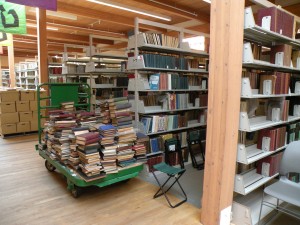




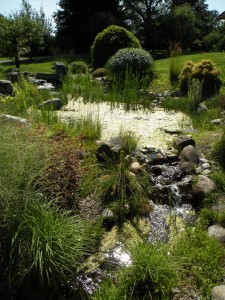
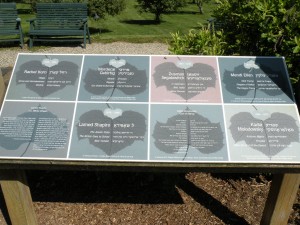

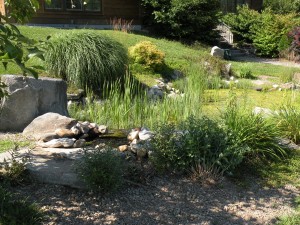
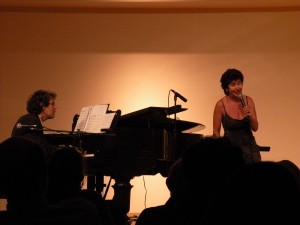

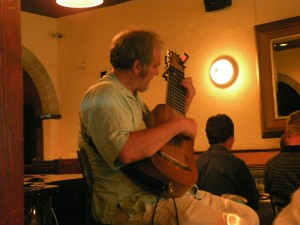
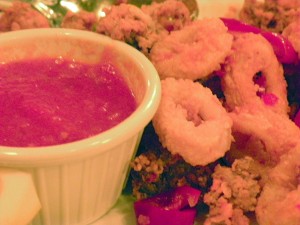
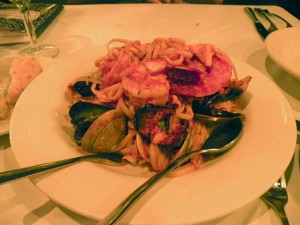
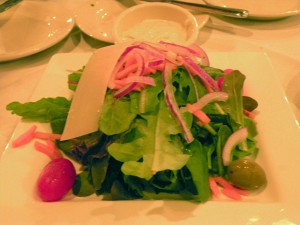

 Splinters of events, existence, the past
Splinters of events, existence, the past
Comments
384 Part 2. Photo Journal: The National Yiddish Book Center on the campus of Hampshire College, Amherst, MA…more food and poetry — No Comments
HTML tags allowed in your comment: <a href="" title=""> <abbr title=""> <acronym title=""> <b> <blockquote cite=""> <cite> <code> <del datetime=""> <em> <i> <q cite=""> <s> <strike> <strong>